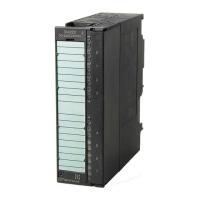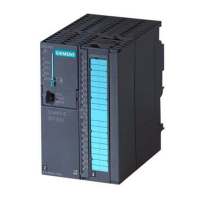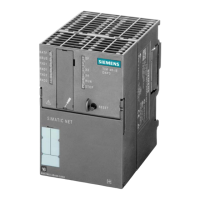Link-up and update
12.4 Time monitoring
S7-400H
162 System Manual, 03/2012, A5E00267695-11
6. Based on your user program, determine:
– The cycle time of the highest-priority or selected (see above) cyclic interrupt (T
WA
)
– The execution time of your program in this cyclic interrupt (T
PROG
)
7. For each DP master system this results in:
T
P15
(DP master system) = T
PTO
- (2 x T
TR
+ T
WA
+ T
PROG
+ T
DP_UM
+ T
SLAVE_UM
) [1]
8. Derived for each IO subsystem:
T
P15
(IO subsystem) = T
PTO
- (2 x T
max_Akt
+ T
WA
+ T
PROG
+ T
PN_UM
+ T
Device_UM
) [1]
NOTICE
If T
P15
(DP master system) < 0 or T
P15
(IO subsystem) < 0, stop the calculation here.
Possible remedies are shown below the following example calculation. Make
appropriate changes and then restart the calculation at 1.
9. Select the minimum of all T
P15
(DP master system) values.
This time is then known as TP15_HW.
10. Define the share of the maximum inhibit time for I/O classes > 15 determined by the
minimum I/O retention time (T
P15_OD
):
T
P15_OD
= 50 ms + min. I/O retention time [2]
NOTICE
If T
P15_OD
> T
P15_HW
, stop the calculation here. Possible remedies are shown below the
following example calculation. Make appropriate changes and then restart the
calculation at 1.
11. Using the information in section Performance values for link-up and update
(Page 166), calculate the share of the maximum inhibit time for priorit
y classes > 15
defined by the user program (T
P15_AWP
).
NOTICE
If T
P15_AWP
> T
P15_HW
, stop the calculation here. Possible remedies are shown below the
following example calculation. Make appropriate changes and then restart the
calculation at 1.
12. The recommended value for the maximum inhibit time for priority classes > 15 is now
obtained from:
T
P15 =
MAX (T
P15_AWP
, T
P15_OD
) [3]

